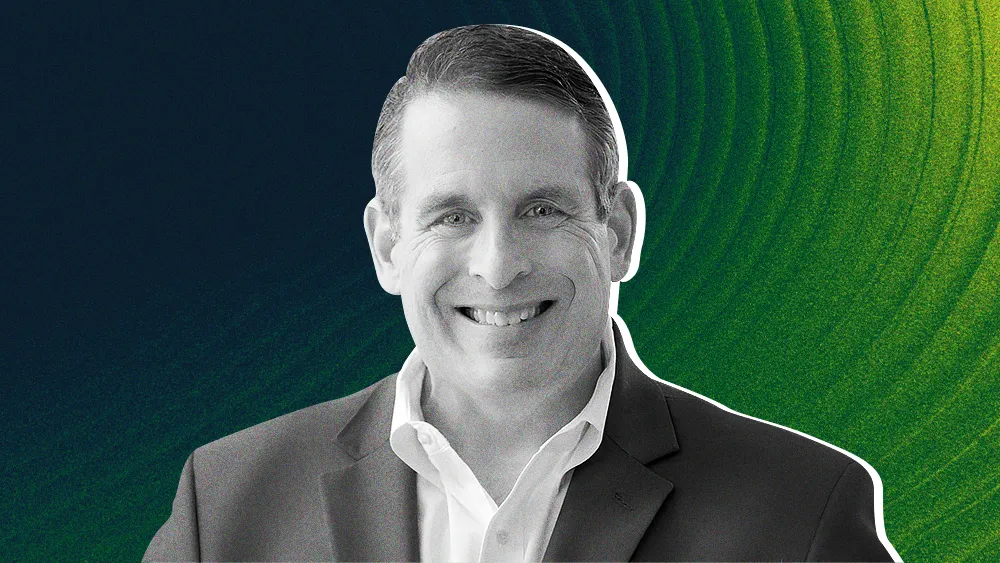
Key Points
C-suite friction often stems from a lack of a shared, measurable definition of success, a problem now amplified by massive AI investments.
Brian Tilzer, a former Best Buy and CVS Health executive, explained why a successful AI strategy hinges on human-led alignment, not just technology.
By defining shared success metrics upfront, the framework empowers teams with transparent data and links executive compensation directly to strategic goals.
The lack of a shared, measurable definition of success has been a source of friction in the C-suite for years. Now, with AI investment on the rise, the problem is intensifying. Without a collective understanding of key milestones, leadership teams tend to focus on competing priorities. The result is an unintentional tug-of-war that can pull an organization's strategy in multiple directions at once.
For an expert's take, we spoke with Brian Tilzer, former EVP, Chief Digital, Analytics and Technology Officer at Best Buy, and the first Chief Digital Officer at CVS Health. As a senior executive who has navigated these challenges at the highest levels of the enterprise, he has a proven track record of leading large-scale digital transformations. But in a moment when AI dominates most leadership conversations, Tilzer is more interested in something else: clarity. For executive teams to succeed with big initiatives, he explained, they must first invest in the hard work of aligning on goals and the metrics that define them.
"AI might change how we execute, but it doesn’t change the fact that leaders must define, prioritize, and question what still differentiates us, and what’s now just the cost of doing business," Tilzer said. For him, this new era demands a different kind of C-suite—one fluent in data, relentless about alignment, and humble enough to recognize that human judgment remains the most complex system to scale.
Clarity is king: Most collaboration breakdowns come from leaders working with different definitions of 'good', Tilzer explained. "Success requires absolute clarity on your objectives and key results. When you can express those goals in measurable ways that everyone agrees on, you create the conditions to win."
Strategy isn’t a document on the shelf, he explained. It's a system of alignment. Without consistent language and metrics, even the most visionary goals get lost in translation.
This focus on human-led alignment gets to the heart of what Tilzer sees as a core obstacle for enterprise leaders in the AI era. While an algorithm can execute a task, it can't make a nuanced judgment call between multiple valid, competing strategies. That remains a uniquely human skill—and one that is now more valuable than ever.
The AI irony: Ironically, a focus on human-led alignment is where Tilzer identified another significant challenge for enterprise leaders. Algorithms can execute a task, but they can't make a nuanced judgment call between multiple valid, competing strategies. "The irony of the AI world is that the role of critical thinking and purposeful collaboration is more important than ever. The role of humanity in leadership is even more vital," he said.
The most successful enterprise leaders aren’t just evaluating, planning, or integrating AI, Tilzer continued. They’re thinking critically about what shouldn’t be automated, what trade-offs matter, and where humans still add unique value. From his perspective, the future ROI potential of enterprise AI will be defined by executives who ask the best questions and then apply that knowledge to their human-led and agent-led workflows.

But C-suite alignment is only half the battle. The real test, according to Tilzer, is whether that high-level strategy can be translated into action for the rest of the organization. Here, a leader's role is that of translator, communicating horizontally across the enterprise and vertically to their own teams. In his view, a successful translation typically boils down to two factors: leadership integrity and data democratization.
The integrity test: Constantly shifting metrics erode trust and make alignment impossible, Tilzer said. Even as tools evolve, he believes leadership must hold the line on what matters. "It is one thing for a leader to declare a strategy and its metrics for success, but it is another to then ask for the next level of funding using a different metric that suits the purpose of the moment. That is why clarity, consistency, and transparency with each other and down through the teams is incredibly important," he said.
Operationalizing strategy: Meanwhile, data operationalizes strategy, Tilzer continued. For him, data democratization is the bridge between the C-suite’s intent and the organization’s execution. The more transparent the numbers and explicit accountability, the more confident and autonomous teams become. "There’s nothing like consistency and transparency as a leader. It’s how you turn strategy from a PowerPoint into a shared way of working."
Of course, a dashboard alone could never win a budget fight. On its own, data rarely solves the messy reality of resource constraints and competing priorities, Tilzer explained. For him, this is where a leader's value becomes clear. Shifting the role from simple monitoring to active guidance makes it easier for leaders to help their top performers solve the organization's most challenging problems.
Getting teams unstuck: When high-performing teams stall, it’s usually because they’ve hit a structural or strategic wall, Tilzer said. But instead of pushing harder to get the team moving again, the best leaders remove friction. In his view, the fastest way to unstick a team is to give them a line of sight into their own impact. "You have to put the data in the hands of the teams doing the work so they can see where they are progressing and what they can do to influence a different outcome."
To navigate the internal competition and "weaponized data" that can emerge from these trade-offs, Tilzer proposed a structured framework. By reframing the discussion, the framework guides leaders into a strategic conversation about which priorities serve the entire enterprise, moving beyond the "my project versus your project" debate. In his model, leaders must agree on investment buckets and their corresponding return timelines before discussing any projects.
The prioritization playbook: "First, agree on the framework. Get your executive team to agree on your investments. You want to target a portion for differentiation and growth, a portion for near-term returns, and a portion to sustain a healthy business. Then agree on what metrics you will use to evaluate all three of those types of initiatives," Tilzer explained. For him, clarifying priorities and metrics upfront reduces ad hoc decisions and creates a system where trade-offs are deliberate, not reactive.
The time horizon trick: Even when the framework is clear, perspective on results can vary dramatically depending on timing, Tilzer cautioned. "When you build a financial model, the answer to whether ROI is good or bad depends entirely on the time horizon. The more you can agree upfront on how you will make those trade-offs and why, and stick to it, the better off you will be." By aligning on time horizons early, leaders can make consistent, intentional decisions that help teams avoid the trap of short-term pressures that distort strategic priorities.
The final step is to put your money where your metrics are, Tilzer said. If a strategic metric truly matters, it should be embedded in the organization's culture through its compensation system. Executive compensation is a board-level issue, he continued, but the C-suite has the responsibility to link those incentives to the "highest of the high strategic measures of success."
Ultimately, Tilzer highlights a truth many leaders tend to overlook: not all incentives are created equal. In fact, in most organizations, 20–30% of executive compensation is tied to outcomes beyond short-term financial metrics, like customer satisfaction or the success of a strategic initiative. "If a metric truly matters to your strategy, you want to measure it," he said.
Beyond a numbers game, it's a way to signal what the organization truly values, Tilzer concluded. It's about ensuring that the behaviors rewarded at the top align with long-term strategic goals. Amid the hype around AI and digital transformation, however, he brings the focus back to the human element—to clarity, accountability, and the kind of leadership that refuses to outsource judgment to machines. Alignment is not built into code, he concluded. It is built on trust. And as a final reminder that the most complicated systems to reengineer are still human ones, he said, "Be the change you seek."
.svg)



.webp)

